
Return to Southern Pacific Sacramento Shops main page
From its beginning in 1867 until the dieselization of the Southern Pacific’s locomotive fleet, the Southern Pacific’s Sacramento Shops were more than just a repair or maintenance station. Centered around the erecting and machine shops, where heavy locomotive maintenance was performed, the facility housed craftsmen who were experts in every step of overhauling and retrofitting the railroad’s equipment. They often fashioned parts from scratch for the railroad’s large and varied roster of steam locomotives, many of which were custom built to company specifications. The craftsmen there would even, at times, manufacture new locomotives from the ground up.
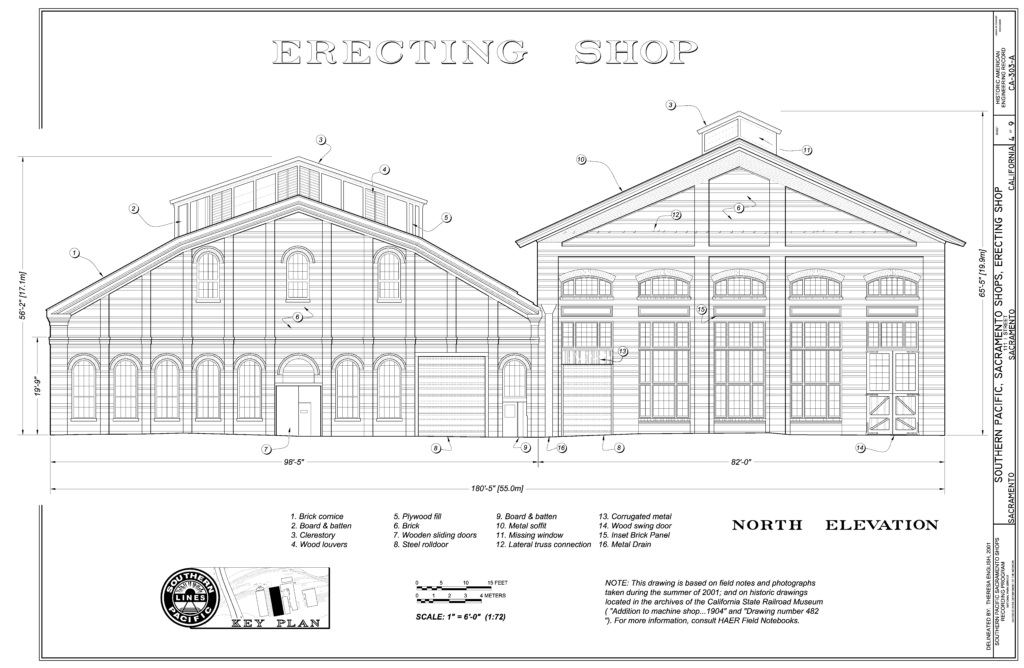
Heavy repair work ranged from scheduled maintenance such as replacing drive wheels and boiler cleaning and rebuilding, to repairs of damage from derailments and wrecks. But they also updated equipment with new features such as air brakes, as these new technologies were introduced. They also manufactured parts for warehouse stock that could be shipped as needed across the entire railroad’s repair network.

While other railroads had extensive heavy repair operations, one thing that set the Sacramento Shops apart was self-sufficiency. It’s unusually extensive recycling program included brass and iron foundries and a rolling mill that allowed the reuse and of junk parts and scrap metal in the production of new parts. [1]

One of the first buildings completed at the facility, the erecting & machine shop was brick masonry, 100 feet by 204 feet, with a row of iron columns down the center supporting its 30 foot gambrel roof. Originally fitted with a 50-foot wooden crane, it was replaced with a steel model in 1888. Eleven pits crossed the western portion of the shop with machinery housed in the eastern portion. The erecting shop disassembled locomotives and sent the components to specialty shops, and then reassembled the components after they had been rebuilt. Because there was little standardization between steam locomotives, many of the parts had to be machined to fit a particular locomotive. By placing the machine shop in the eastern portion of the erecting shop, machinists could minimize handling of the parts as they customized them to fit. The machine shop also provided the adjacent roundhouse with parts needed for running repairs. Initially, the equipment in the machine shop was powered by flat leather belts that transmitted power from a steam-powered rotating line shaft. This continued up to World War II, although the shafts were later driven by electricity rather than steam. [2]
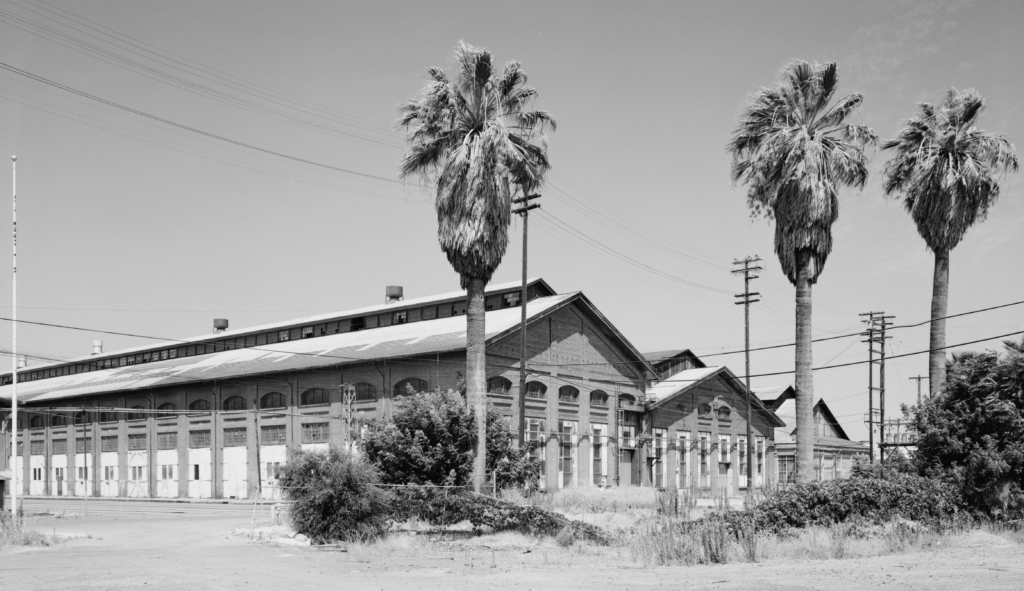
Access to the erecting shop and the adjacent boiler shop was via a transfer table that could move a locomotive to the left or right to align with the tracks entering the bay in which it would be repaired. While locomotives could make most movements around the facility under their own power, because locomotives sent to the erecting shop would be out of service for an extended time, maintenance crews would dowse the fire, drain the boiler and remove the tender (which would then be moved to the tank shop for repairs). This meant that the locomotive had to be moved to the transfer table by a small yard switch engine. The transfer table had a winch that could move the locomotives on and off of it. [3]
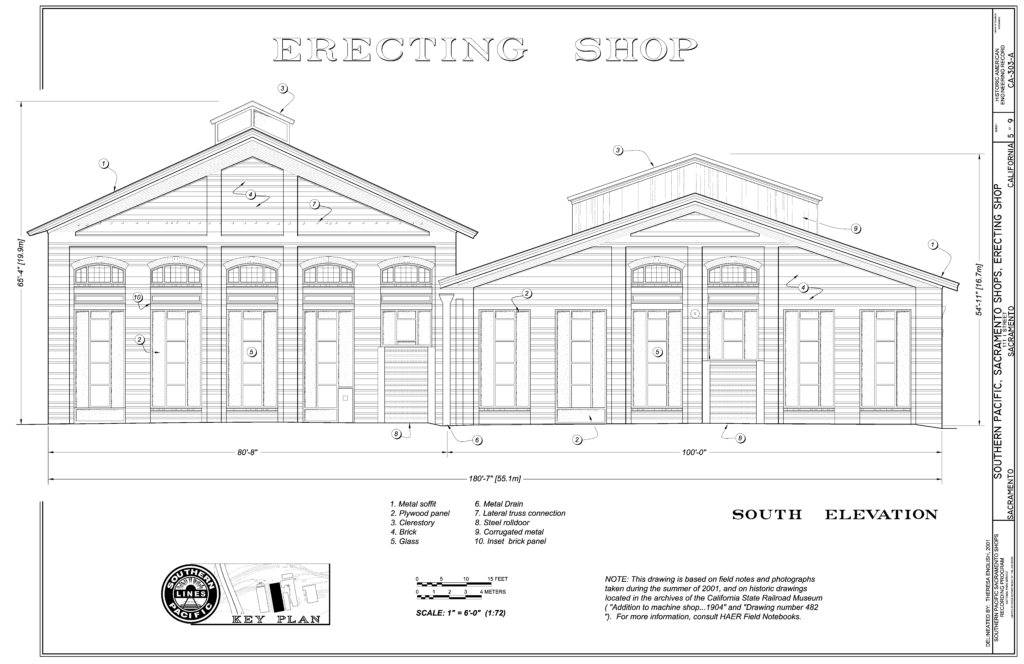
The heavy repair process involved extensive dismantling of the locomotive. After entering the erecting shop, the rods, pistons and associated equipment was removed and the locomotive was lifted off its wheels and moved to blocks on an adjacent track. Here it was further dismantled, with all parts being inspected and marked to associate them with the specific locomotive (as noted before, there was little standardization in steam locomotives, so it was important to note the locomotive from which the parts were removed). The parts that were reusable were stored, while those that were reparable were sent to the machine shop, blacksmith, or other specialty shop for refinishing. Parts that needed complete replacement were manufactured or replaced from warehouse stock. If needed, the boiler could be removed, set on a flat car on a nearby track, and then moved to the boiler shop via the transfer table. Alternately, boilermakers and machinists could complete repairs on the boiler and frame assembly on the erecting shop floor.

After the repair process that could take days or weeks, the locomotive was reassembled, lubricated, re-coupled to its tender and the shop switch engine moved it to the firing-up shed where its boiler was refilled and pressure tested, and the firebox was lit. The repaired locomotive was given a new coat of paint then filled with coal or oil, water, and sand. After a few tests, the locomotive was put back to the duty roster. [4]

In 1905 a new longer erecting shop was built on the west side of the existing facility to service larger locomotives. This also opened up more space for machine shop improvements that included larger equipment including a 76-inch lathe that was almost 50 feet in length. The new erecting shop required a lengthening of the transfer table pit by 544 feet. The transfer table itself was lengthened to 44 feet to allow it to carry the larger locomotives. Even this length proved insufficient, and in 1945 the table was lengthened to 70 feet to handle the articulated locomotives that had wheelbases of more than 60 feet. Other than this and some similar expansions in buildings as the Southern Pacific expanded its steam operations after World War I, little changed in the repair process itself up to World War II. [5]
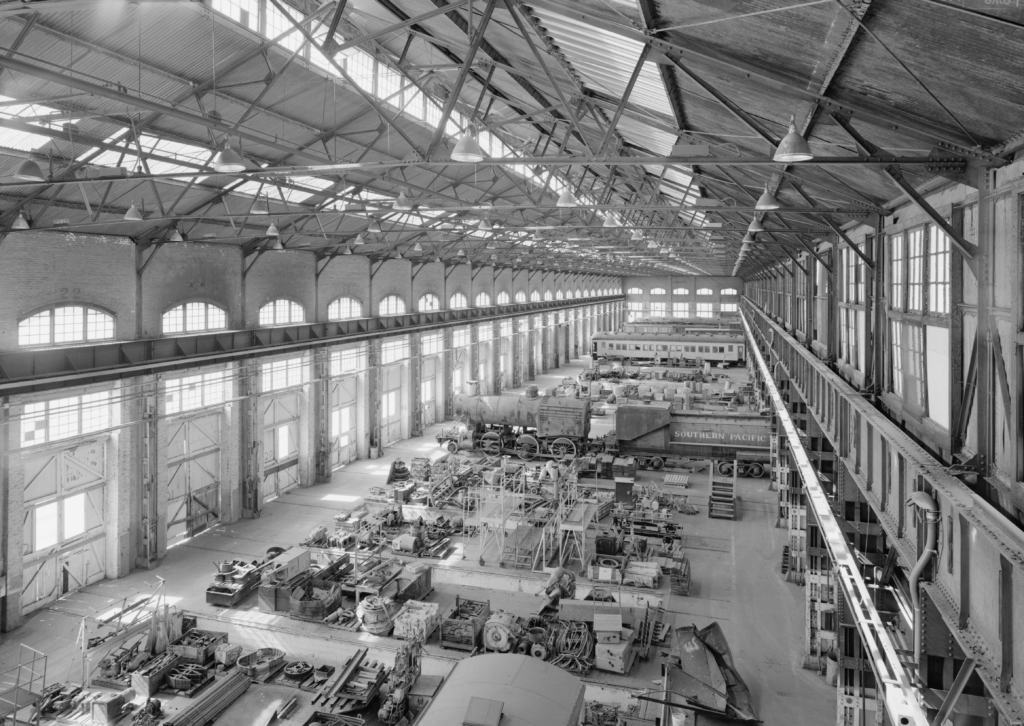
Then, everything changed with the advent of diesel power, and the challenge of maintaining and repairing a new, completely different kind of locomotive. It’s not that the Southern Pacific wasn’t aware of the coming of diesel technology. Director of maintenance and operations Julius Kruitschnitt began to look into the new technology during the 1920s. In 1922 he made the first move toward mainline dieselization by any American railroad when he contacted the president of Baldwin Locomotive Works to express interest in a 1,000 horsepower diesel locomotive. And before that, the new owner of the Southern Pacific, E.H. Harriman met with Rudolph Diesel in 1904 to discuss the possibility of using Diesel’s new engine technology in railroad locomotives. But at the time diesel engines were too bulky for installation in a locomotive. And although Kruitschnitt continued to support the idea, any conversion to diesel power stalled when he retired in 1924. Then, the Depression brought most railroad modernization to a halt across the nation.
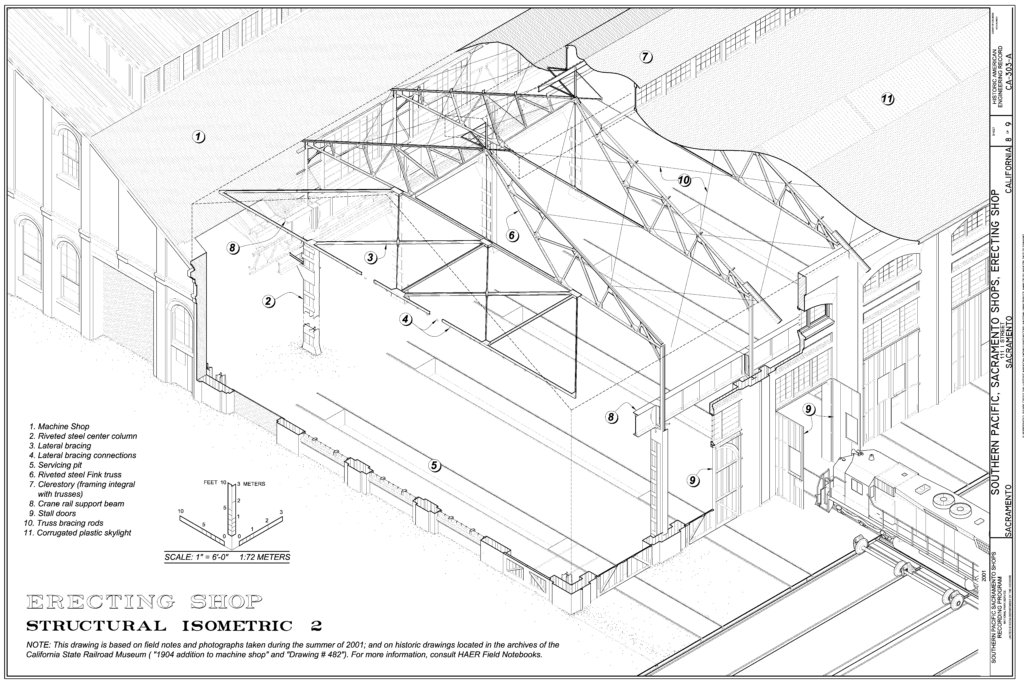
By the 1930s, the Southern Pacific had begun running some passenger trains with diesel power, and was using them for yard switching, but appropriate freight diesels were not available until the 1940s because of established locomotive builders’ reluctance to change from their tried and true steam power. Then, during World War II, the War Production Board limited production of new diesel locomotives.
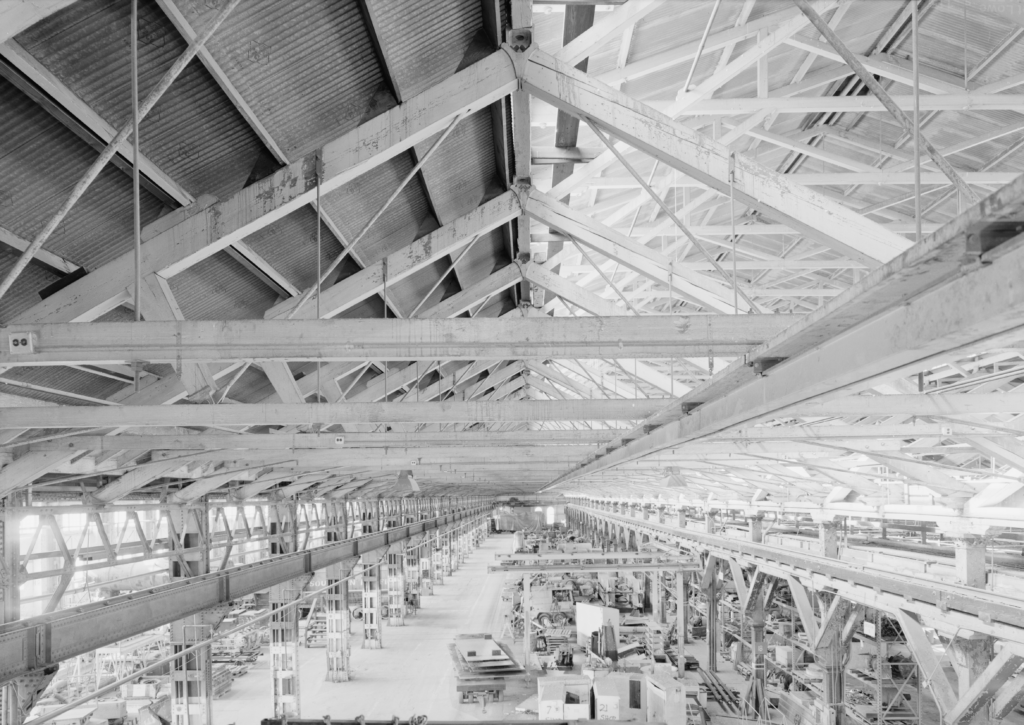
But all of these factors merely delayed the inevitable. While the Southern Pacific had been operating a new diesel-powered streamlined passenger train “The City of San Francisco” in conjunction with two other railroads since 1936, it wasn’t until 1947 the railroad began analyzing the time required to fully convert to diesel power. They, like other railroads, ended up following a path from “situational adoption” where diesels were adopted in isolated assignments, to “general conversion,” that introduced diesels across the road without fully replacing steam, to a final total transition. It was the mid-1950s when the company clearly had dedicated itself to a totally diesel fleet. [6]
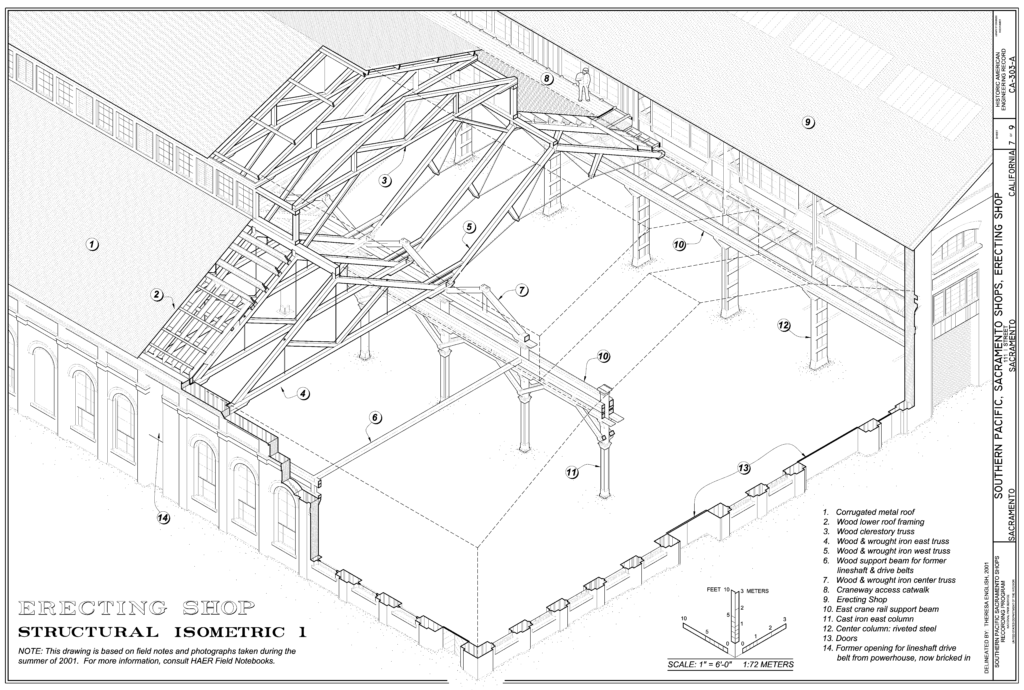
This piecemeal approach meant a lengthy transition period for repair and maintenance from steam to diesel, requiring existing facilities to provide services to both for a time period. When by the end of the 1950s steam finally reached the end of its reign, Southern Pacific began to make major changes to running repair and turning facilities. Diesels did not need to be “turned” like steam locomotives, as they were linked with cabs at both ends of a multiple-unit group of locomotives, and could operate equally well in either direction. And in any case, these multiple-unit diesel locomotive lash-ups would not fit on a turntable built even for the largest steam engine.

The length of these multi-unit diesel locomotive sets also made rectangular running repair facilities more appropriate than the traditional steam engine roundhouse. So roundhouses and turntables were the first repair facilities to be demolished as railroads neared the “total transition” period of dieselization. In 1959, less than a year after the last official steam run, Southern Pacific tore down the roundhouse at Sacramento Shops. Diesel locomotives also did not need to stop for fuel as frequently as steam locomotives, so railroads were able to abandon fuel and water stations along their routes.
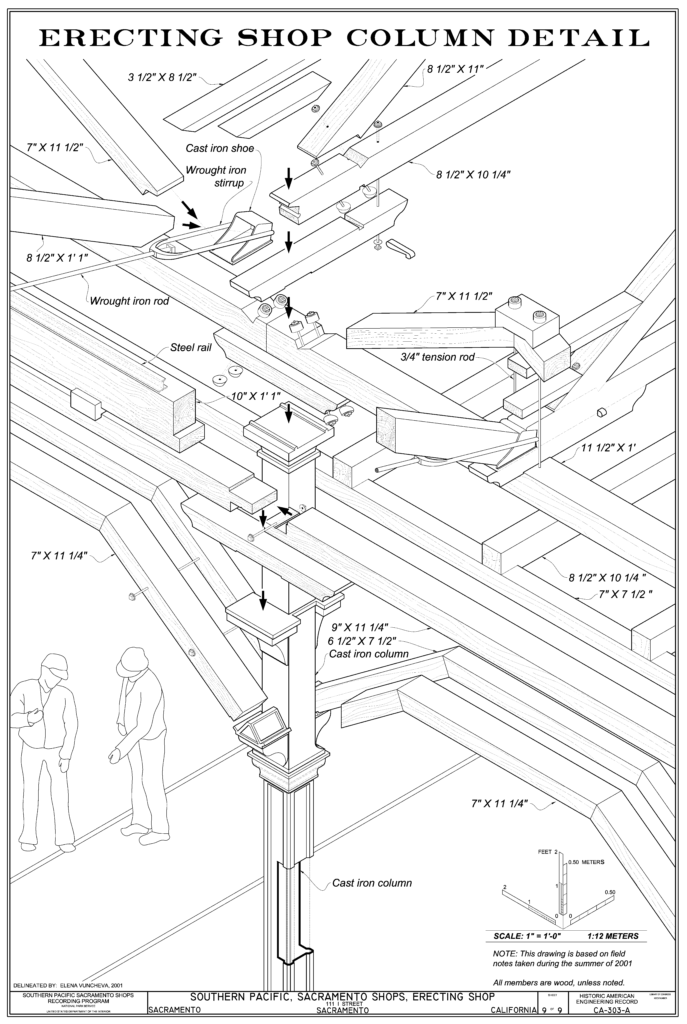
The heavy repair facilities such as at Sacramento Shops struggled throughout the transition period to work on both steam and diesel locomotives in the same facilities. By the late 1940s, a portion of the Sacramento facility was set aside for diesel heavy maintenance, and the following ten years the facility was split by the differing needs of the old and new technologies. In 1952 the northernmost four bays (of 25) in the erecting shop were allocated for diesel maintenance. By 1953, diesel maintenance took up seven bays and 200 feet of the center and eastern portions of the north end of the building. But as late as 1955 a request to rework the shops for diesel repair was denied because, as B.M. Brown, general superintendent of motive power, wrote, “We are still doing a substantial amount of steam locomotive work at Sacramento General Shops and recommend that this project be deferred until complete dieselization has occurred.”
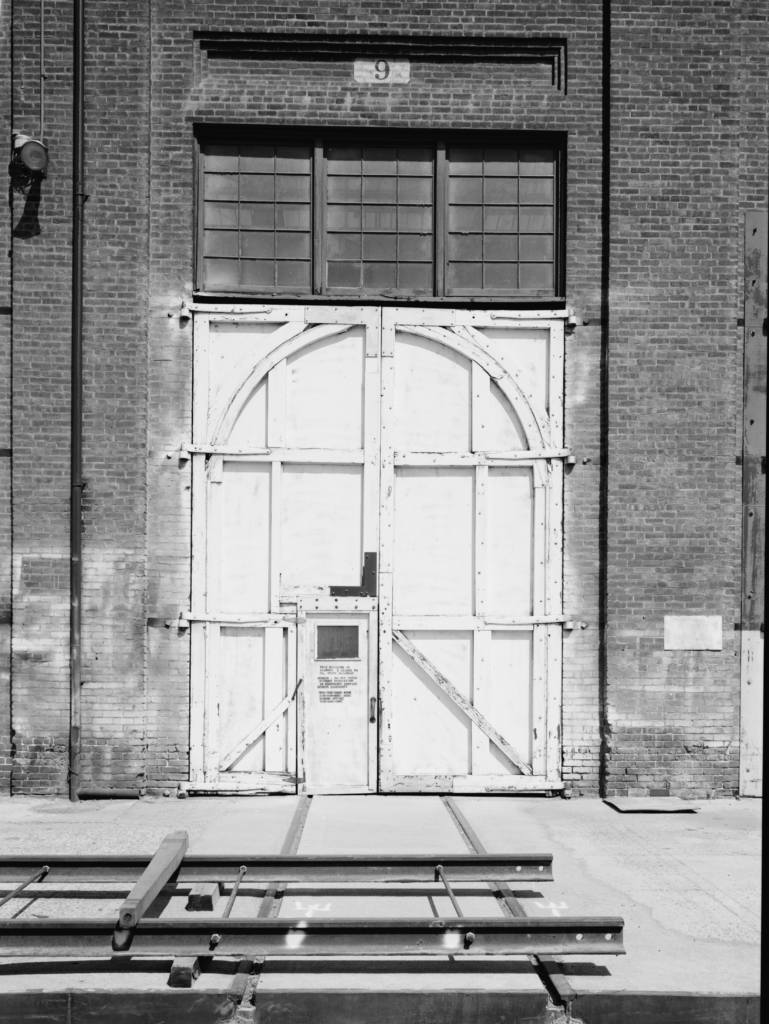
This combination of steam and diesel maintenance in the same facility continued to the end of the decade, with workers struggling with the inefficiency of using a facility optimized for steam power for a radically different technology. The company’s engineers finally looked to the outside, and decided to emulate the job process of locomotive manufacturer EMD, the rebuilding operations of which they were familiar. EMD’s highly standardized practices were not dissimilar in organization to Southern Pacific’s existing steam locomotive repair procedures, but gave the SP engineers a template as to how to apply that standardization to the new technology.
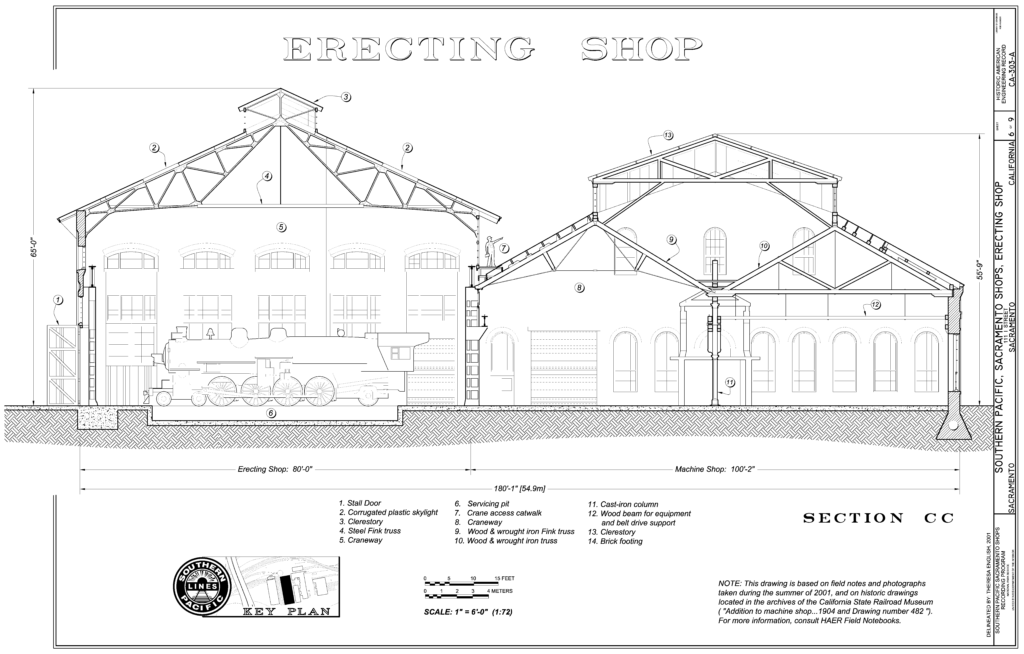
In the 1960s a complete changeover to diesel repair and maintenance could finally proceed. A new engine parts cleaning building was built on the site of the roundhouse, the boiler shop became the truck shop, and a new load test shed was built to the north of it. The erecting shop was set up with a main locomotive assembly/disassembly area and several sub-assembly lines including an engine reassembly line set up in the center bay.
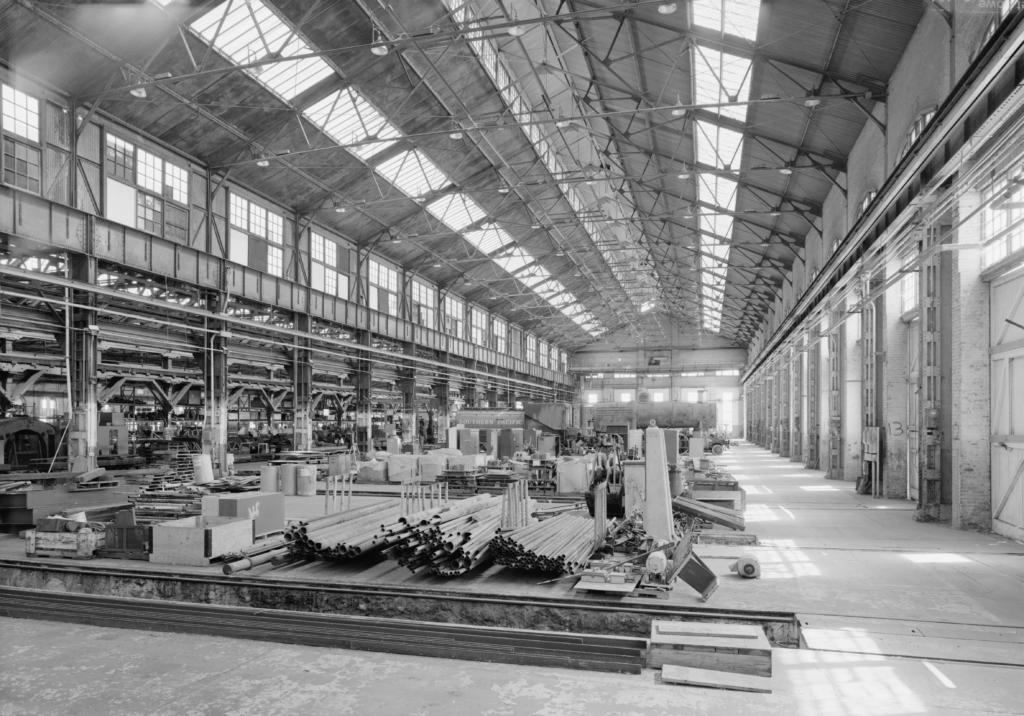
A locomotive destined for heavy maintenance would enter the north end of the erecting shop to be stripped. The locomotives trucks were removed and sent to the truck shop for service. The diesel engine and electrical generator were then removed by an overhead crane, with the engine being moved to the engine parts cleaning building. There the engine was disassembled and the parts sent through a system of cleaning machines. Parts needing repair were sent to sub-assembly shops. The engine block, and the repaired and cleaned parts, were returned to the engine reassembly line in the center bay of the erecting shop. Other electrical and mechanical parts went through their own cleaning and repair processes. All the parts were finally returned and reassembled onto the locomotive. The locomotive was then sent to the load test shed, and was then repainted and placed back in service. [7]

Although the Sacramento Shops went through extensive alterations for diesel maintenance, work was slowly transferred to newer maintenance facilities in Los Angeles, Roseville, Ogden, and Houston. In 1965 inspection and running maintenance was moved to Roseville, but the Sacramento Shops continued heavy maintenance and rebuilding work.

In 1969 Southern Pacific began a General Rehabilitation and Improvement Program (GRIP) at Sacramento Shops that changed its usual practice of repairing diesel engines when they failed with scheduled major overhauls. This gave the railroad an opportunity not just to proactively rebuild, but to upgrade locomotives with the latest modifications. This program provided the railroad with reliable and state-of-the-art motive power for two-thirds the cost of a new locomotive. This program allowed Southern Pacific to avoid purchasing new locomotives until 1984. A second GRIP took place in Sacramento between 1986 and 1989. Heavy repair and maintenance continued in Sacramento until the facility was closed in 1999. [8]
The Sacramento Shops site is now the home of the California State Railroad Museum.
This recording project was completed by the Historic American Engineering Record; the Erecting and Machine Shop Survey HAER CA-303-A. This project, completed in 2001-2002 was prepared by historians Carolyn Dougherty, LeeAnn Bishop Lands, J. Lawrence Lee, and Camille Vicenti. Plans were delineated by Joshua May, Pete Brooks, Theresa English, and Elena Vuncheva. Photos were made by Jet Lowe
[1] Historic American Engineering Record Survey HAER CA-303 Written Historical and Descriptive Data pp. 106-115 https://tile.loc.gov/storage-services/master/pnp/habshaer/ca/ca3100/ca3107/data/ca3107data.pdf accessed 06/01/2021 pp 3-6
[2] ibid pp 11-15, 192
[3] ibid pp 17-19
[4] ibid pp 20-22
[5] ibid pp 42-51
[6] ibid pp 51-59
[7] ibid pp 61-72
[8] ibid pp 165-169